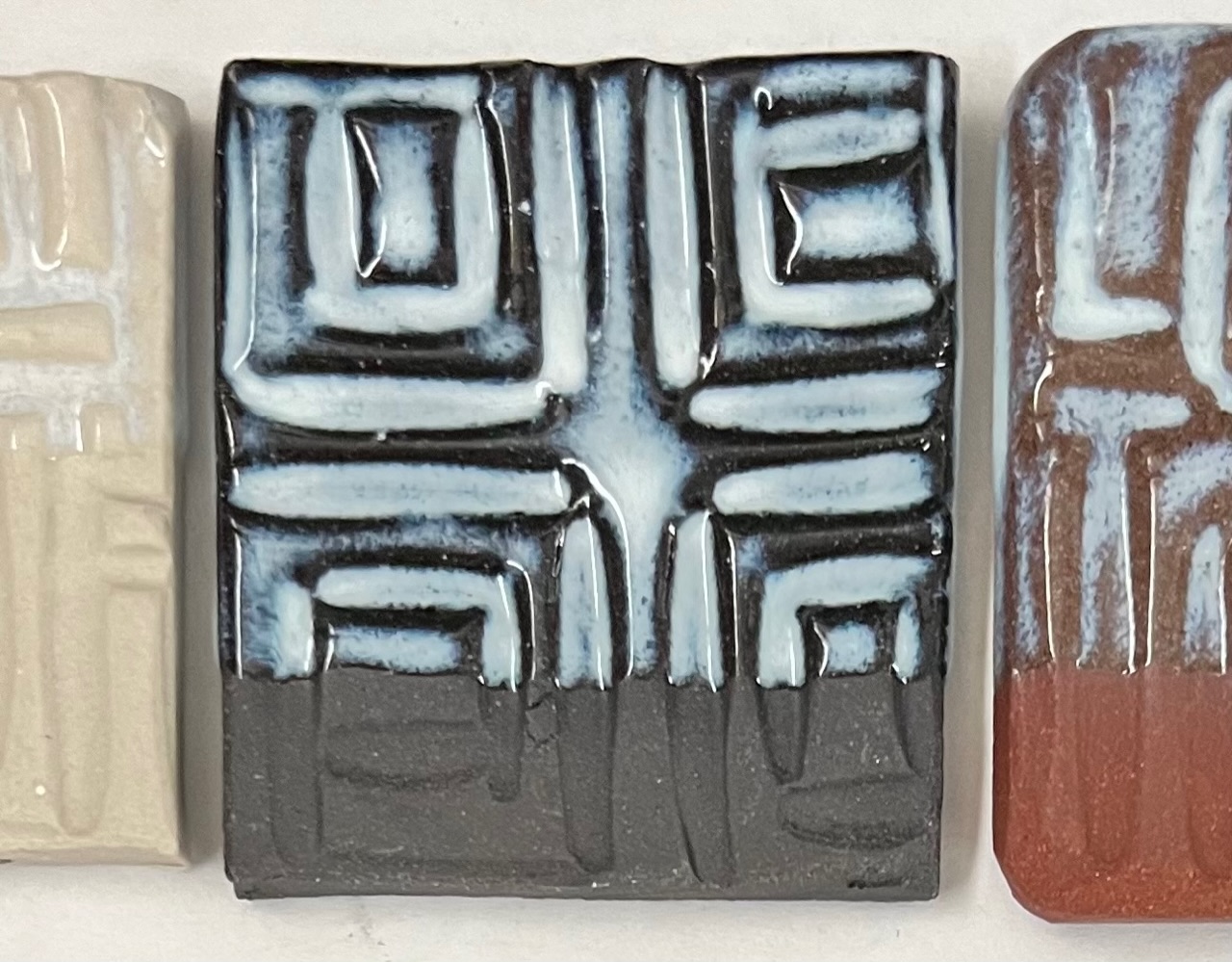| Monthly Tech-Tip | No tracking! No ads! |
A pottery glaze so reactive it can eat through a firebrick. The fix struck boron-blue gold!
The melt fluidity tester was fired at cone 6. The glaze on the left is G2826A2, a 50:30:20 Gerstley Borate base glaze recipe (historically used for reactive glazes). The one on the right is G2926A3, an adjusted version that cuts the B2O3 level and adds lots of SiO2. The result is much more sane, although still very melt-fluid glaze. This is also a lesson in the chemistry that produces boron-blue: The one on the left does not and the one on the right does, producing a highly decorative boron-blue, especially on dark bodies. Why? High B2O3 is not the key, it is lower. CaO is lower but it was higher in the original 50:30:20 recipe and that had plenty of boron blue. The SiO2 appears to be the enabler, it is much higher. And we are using 325 mesh silica, so it dissolves in the melt better.
Related Pictures
Example of variegation by thickness-induced boron blue

This picture has its own page with more detail, click here to see it.
This is G2826A3, a transparent amber glaze at cone 6 on white (Plainsman M370), black (Plainsman 3B + 6% Mason 6666 black stain) and red (Plainsman M390) stoneware bodies. When the glaze is thinly applied it is transparent. But at a tipping-point-thickness it generates boron-blue that transforms it into a milky white.
Gillespie Borate is doing something very strange at 1700F

This picture has its own page with more detail, click here to see it.
On the left is G2826A3, a cone 6 transparent glaze (an improvement on the 50:30:20 classic Gerstley Borate base transparent recipe substituting Gillespie Borate, reducing its percentage and increasing SiO2). Despite the improvements it exhibits this strange cracking and crawling. The G2826A1 on the right uses a frit to source the boron instead, clearly a better idea. These tiles were fired to 1700F. The problem is likely the ulexite mineral in the Gillespie Borate - it is known for this behavior of suddenly shrinking and then suddenly melting (the latter of which is just starting). Since Gillespie Borate is plastic and suspends slurries well we thought calcined kaolin would be better than raw kaolin in the G2826A3 recipe (to minimize drying shrinkage). However, it did not improve the situation. All of this being said, this recipe is still working reasonably well at cone 6 (likely stopping and holding it at 1700F exaggerates the problem).
Videos
Links
| Glossary |
Boron Blue
Boron blue is a glaze fault involving the crystallization of calcium borate. It can be solved using glaze chemistry. |
| Glossary |
Reactive Glazes
In ceramics, reactive glazes have variegated surfaces that are a product of more melt fluidity and the presence of opacifiers, crystallizers and phase changers. |
| Glossary |
Fluid Melt Glazes
Fluid melt glazes and over-melting, over fired, to the point that they run down off ware. This feature enables the development of super-floss and cyrstallization. |
| Glossary |
Melt Fluidity
Ceramic glazes melt and flow according to their chemistry, particle size and mineralogy. Observing and measuring the nature and amount of flow is important in understanding them. |
Got a Question?
Buy me a coffee and we can talk

https://backup.digitalfire.com, All Rights Reserved
Privacy Policy

